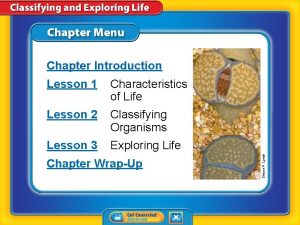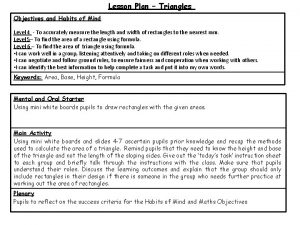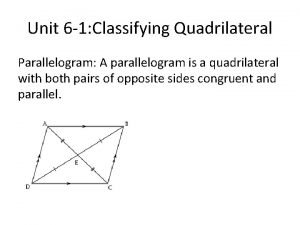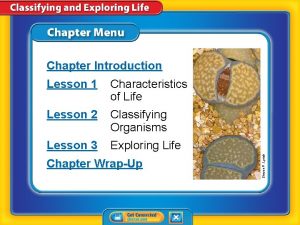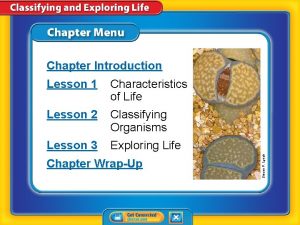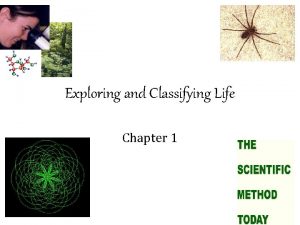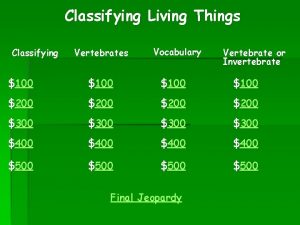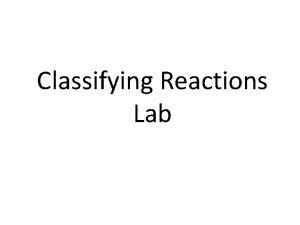Lesson 1 Characteristics of Life Lesson 2 Classifying















- Slides: 15

Lesson 1 Characteristics of Life Lesson 2 Classifying Organisms Lesson 3 Exploring Life Chapter Wrap-Up Steven P. Lynch Chapter Introduction

Classifying Organisms • binomial nomenclature • species • genus • dichotomous key • cladogram

Classifying Living Things • There have been many different ideas about how to organize, or classify, living things. • Carolus Linnaeus classified organisms into two main groups, called kingdoms, based on similar structures.

Determining Kingdoms (cont. ) kingdom Science Use a classification category that ranks above phylum and below domain Common Use a territory ruled by a king or a queen

Determining Domains • The current classification method for organisms is called systematics. • Systematics uses all known evidence to classify organisms, including cell type, how food and energy are obtained, structure and function of features, common ancestry, and molecular analysis.

Determining Domains (cont. ) Organisms are now classified into one of three domains and then into one of six kingdoms.

Scientific Names • Binomial nomenclature is a system for naming organisms with two-word scientific name: • A species is a group of organisms that have similar traits and are able to produce fertile offspring. • A genus is a group of similar species.

Scientific Names (cont. ) genus from Greek genos, means “race, kind”


Scientific Names (cont. ) • Binomial nomenclature was developed by Linnaeus and is still used today. • Scientific names are important because each species has its own scientific name and those names are the same worldwide.

Classification Tools (cont. ) A dichotomous key is a series of descriptions arranged in pairs that lead the user to the identification of an unknown organism.

Classification Tools (cont. ) A cladogram is a branched diagram that shows the relationships among organisms, including common ancestors.

• All organisms are classified into one of three domains: Bacteria, Archaea, or Eukarya.

• Every organism has a unique species name.

• A dichotomous key helps to identify an unknown organism through a series of paired descriptions.
 Lesson 1 characteristics of life answer key
Lesson 1 characteristics of life answer key Exploring and classifying life answer key
Exploring and classifying life answer key You light up my life chemistry lab answer key
You light up my life chemistry lab answer key Classifying and exploring life
Classifying and exploring life Exploring and classifying life
Exploring and classifying life A square is a parallelogram always sometimes never
A square is a parallelogram always sometimes never Classifying triangles lesson plan
Classifying triangles lesson plan Practice 6-1 classifying quadrilaterals answers
Practice 6-1 classifying quadrilaterals answers Classifying quadrilaterals
Classifying quadrilaterals Classifying living things lesson 1 answer key
Classifying living things lesson 1 answer key Lesson 4-1 geometry
Lesson 4-1 geometry Lesson 3-1 classifying rational numbers
Lesson 3-1 classifying rational numbers Lesson outline classifying organisms
Lesson outline classifying organisms Lesson 2 classifying organisms
Lesson 2 classifying organisms Lesson 4-1 classifying triangles
Lesson 4-1 classifying triangles Which is not a parallelogram
Which is not a parallelogram
